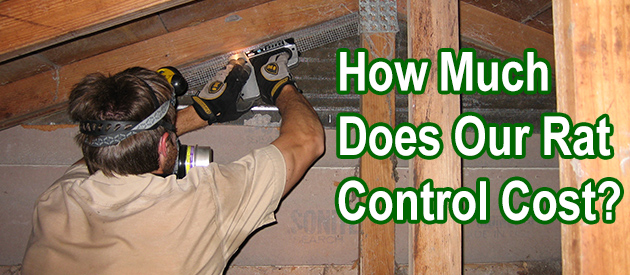Davidson County, Nashville Rat Control Situation:
David, Thank you for your site. Lots of great info there and very thorough. I had rats in my attic. Before I saw your site I called Orkin and they did a decent job with trapping and exclusion. It's hot in Nashville now so we have not had problems recently. Now it's time for cleanup. Wildlife Conrol quoted $4500. We can not and will not be paying that. A friend that does termite work mostly quoted $250. He proposes using his shop-vac to vaccum the droppings. I have ordered the Bac-azap for disinfecting, based on your recommendation and other reviews read online and he will also spray down the attic. Couple questions: I'm concerned about the use of the Shop-vac for the exhaust that will be broadcast while it's on. He says he will look for a Hepa filter, but in your opinion is this acceptable? Many Wildlife Control techs were in the attic many times over a month, without respirators, and to my knowledge no disease contracted (visibly). Is that enough to rule out potential hazards in using a Shop-vac? I'm told the level of droppings is "not that bad" and isolated to a couple areas. That may or may not help you. Second question is if spraying the enzyme will be sufficient, or if a fogger is required? I do have small children which is the concern, but I'm trying to remain reasonable and believe the drastic and expensive techniques proposed by some may be overkill (scare tactics?). Thanks again for your informative site, and thank you in advance for any advice.
I had a pet rat that went missing in early June of this year and just today we discovered it got stuck between my wall and dresser. It looks like a pancake. At first, I thought it was mold but then saw it's eyes and skeleton. I have no idea what to do and the thought of removing it myself is horrifying. How do I remove a rat the has decomposed this far and that is pretty much stuck to my wall and dresser?
Sunday morning woke up to find the rubber threshold to the front door was eaten away. Droppings about Ľ - 3/8" were found throughout the house. Looked like more than one with about 20 droppings. Spent Sunday replacing the threshold, put two TomCat baited traps by the front door and two TomCat baited traps in the house (by front door and next to refrigerator. Also, two mouse traps with peanut butter bait (the kind the mouse goes in and the door shuts behind it). Went to go to work today (Monday), new threshold eaten away, and only about 6 - 7 droppings in the house. All traps not touched. I have read sticky paper is a good way to catch rodents. Based off what I have stated above, is this a rat looking for a new food source to go back and tell his friends?
Hi David. Are you based in the Portland Metro area, or is that Wildlife Control? I have a listing that shows old rat black box traps and has about 12 bags of insulation that's been wrapped up for years. Buyer just had a home inspection and is asking for any and all rats found in the premises and in the crawl space to be removed, the bags removed, all the other contaminated insulation removed, vacuumed, fogged...and then new insulation laid. Would that be a job you can bid on, maybe Monday?
Nashville Rat Control Tip of The Week
Tips On Removing A Rat Stuck In A Dumpster
If you have a rat stuck in your dumpster, please, don't forget that this is a scared creature that is now under a lot of pressure and fear for its life. Try not to additionally irritate it or mess around with it, as it might attack you, trying to protect itself. Rats carry illnesses which they can transfer directly through bites, scratches, or if their saliva drops on an open wound on your skin.
Place a lethal snap trap inside the dumpster. Accurately managing rats implies eradicating the vermin. You will need to do this as fast as possible as to not prolong the rat's suffering. Killing a rat with a deadly wooden snap trap is the most accommodating method of disposing of that rat. The rat will be frightened, so you might want to smear some peanut butter on this trap. Leave the scene, and return two or three hours later to check whether the problem is solved. If the rat was caught, use a fabric, towel, or gloves to place the carcass in a fixed plastic holder, pack or sack, which you will then be able to toss in a garbage sack. Most urban areas will permit you to discard rat remains in your garbage bin; however, you should first check your local laws.
You can also help the rat escape. You might not have any desire to kill the rat out of the blue, and would instead like to assist it with liberating itself to continue its life. The rat is stuck presumably in light of the fact that the dumpster isn't full enough, and it hasn't got anything to climb on. Toss in some more trash, or add a branch or something comparable for the rat to move up on. Stay away or leave the scene completely.
If all else fails, you can always call a wildlife removal expert.


